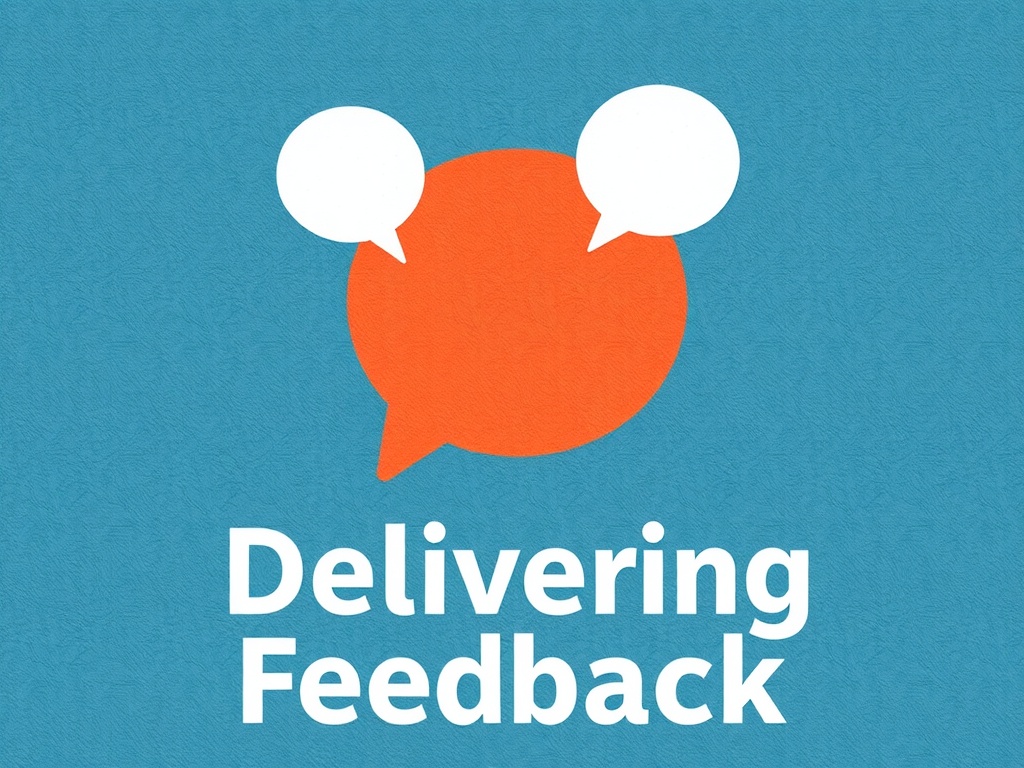Good feedback is vital in the workplace. It helps to improve strengths, spot areas to grow, and supports professional development.
Managers and supervisors need to know the types of feedback they can give. This helps boost employee engagement and the success of the organization. Whether it is formal feedback or casual chats, being able to give meaningful feedback can change how a team works together and its overall performance.
In this guide we’ll look at the types of feedback and tips to make your feedback sessions more effective.
Jump To Section
10 Types of Feedback in the Workplace Every Manager Should Utilize

Effective leaders understand that feedback should not be the same for everyone. There are different types of feedback that meet the needs, situations, and goals of each employee. Feedback can support positive actions and help with growth. Each type encourages growth and teamwork. Having regular feedback sessions in a good setting helps your team keep improving. Here are ten types of workplace feedback that all managers should know, with practical tips on how to use them.
1. Positive Feedback
Positive feedback is important for celebrating achievements and encouraging good behavior. It does more than just give praise. It boosts employee confidence and lifts morale. By pointing out specific achievements, you help employees do well again while improving overall performance. For instance, thanking an employee for solving customer issues can motivate them to keep working hard.
Positive feedback also helps the whole team perform better. Recognizing group successes, like finishing a project early, strengthens teamwork and motivation. Moreover, employees are more engaged in workplaces where their hard work is celebrated often.
To make feedback more effective, give it quickly in personal and group settings. Connecting this feedback to organizational goals helps employees see how their hard work contributes to the larger purpose. This builds pride in their work and gives them a sense of meaning in what they do.
2. Constructive Feedback
Constructive feedback is important for both recognizing what is good and helping people improve. A culture of feedback that focuses on constructive criticism helps guide employees with practical tips. For instance, instead of saying, “Your report lacked detail,” you might say, “Adding more data sources to your analysis would make it clearer.”
This type of feedback supports professional development. It allows employees to see where they can improve without feeling unappreciated. Constructive feedback also encourages open conversation, which is key for good team dynamics. This gives employees a chance to express their thoughts and seek clarity and solutions.
When you give constructive feedback, be specific and focus on solutions. Also, balance this with recognizing what people do well to create a supportive environment. The goal of effective feedback is to help employees learn and grow. This will boost overall performance and create a strong feedback culture in your workplace.
3. Developmental Feedback
Developmental feedback is all about helping people grow over the long term. It aims to guide employees on their career paths by spotting where they need to improve and giving them a plan to do so. For example, if someone finds it hard to organize projects, feedback might suggest using certain project management tools or better time management methods.
When you focus on employee growth, it helps them connect their personal goals with the goals of the company. One important part of developmental feedback is working together to set professional growth goals. This way, everyone stays engaged and responsible for their progress.
Having regular sessions that focus on developmental feedback encourages continuous learning and helps shape behaviors to meet changing job demands. This kind of feedback works because it promotes constructive criticism while inspiring people to reach their full potential. In the end, this not only helps in career growth but also builds a positive workplace culture.
4. Coaching Feedback
Coaching feedback is a different approach to the feedback process. It creates a continuous conversation instead of just one-off fixes. This method uses performance management strategies that focus on personal improvement areas. It helps anyone from team members who need support to those looking to grow their leadership skills. This kind of feedback boosts their confidence.
Imagine a worker who is great at coming up with new ideas but has trouble with presentations. A coaching feedback session could include practical tips like practicing storytelling or improving visual aids to make their points clearer.
As workers go through their learning curve, coaching feedback helps them keep improving. By being a mentor, you can help them with their specific weaknesses and find chances for self-improvement. When you give targeted feedback, it motivates employees to exceed their goals. It also helps them contribute positively to team dynamics and company culture. It’s important to promote open communication and show empathy during coaching to create trust and lasting results.
5. 360-Degree Feedback
360-degree feedback collects opinions from peers, managers, and direct reports. It gives a full view of what an employee does well and what they can improve. This method helps employees get valuable insights. It also allows for anonymous feedback, which supports honesty.
By including peer feedback, employees can see how their actions impact team dynamics. For example, input from co-workers about collaboration skills can lead to noticeable changes aimed at hitting shared organizational goals.
Scheduled feedback sessions with this approach show multiple perspectives from different sources. This promotes ways to take action that fit individual needs. When done right, 360-degree feedback encourages open communication. It creates a space where employees feel supported as they grow.
6. Corrective Feedback
Corrective feedback is important for solving issues in performance reviews. When given properly, it helps guide an employee away from bad habits and towards positive change. For instance, if someone frequently misses deadlines, share specific examples and suggest ways to manage their time better.
While discussing areas for improvement, it’s important to remind direct reports of their value at work. Ending the talk with positive outcomes helps maintain respect during difficult conversations. When employees see that you care about their growth, they are likely to respond in a good way.
Corrective feedback also helps create accountability. By linking feedback sessions to past performance, employees can clearly see what is expected and what steps they should take to succeed. Whether in a one-on-one or team meeting, being kind and understanding throughout helps build a feedback culture that leads to real improvements.
7. Recognition Feedback
Recognition feedback shows that an employee’s hard work is important and leads to positive outcomes. When employees feel acknowledged and appreciated, it helps build trust and improves company culture. For example, a manager can write a structured email to thank a team member for being detailed during quality checks.
The benefits of recognition feedback extend further than just lifting morale. It can inspire other employees to improve and engage more in team goals. Having group meetings to celebrate shared successes, like reaching sales targets, encourages ongoing involvement.
In addition, regular feedback that focuses on recognition helps make appreciation a part of daily work. To be most effective, leaders should adjust their feedback to fit each person’s style, whether they prefer public praise or private support, and connect successes to the organization’s goals whenever they can.
8. Informal Feedback
Informal feedback is very important for good communication at work. It happens naturally during casual chats or unexpected meetings. This type of feedback helps to create open communication and improves relationships among coworkers. For example, saying “Great idea!” after a team meeting encourages new ideas.
Though it is less formal than structured feedback, informal exchanges help managers act quickly when they see areas for improvement. It also gives them a chance to boost morale. They can acknowledge hard work on short-term goals or affirm an employee’s important role.
This type of ongoing feedback inspires employees to change their actions naturally. The casual style of constructive feedback makes informal talks continuous motivators, fitting well with individual performance and the goals of the organization.
9. Formal Feedback
Formal feedback is important for creating helpful conversations at work. It turns feedback sessions into productive talks. These sessions often fit with company goals. They usually happen during annual reviews or scheduled team meetings for evaluations.
Formal feedback helps make sure everyone’s performance is on track. For instance, a supervisor may use key performance indicators (KPIs) to give specific feedback during quarterly meetings. These evaluations provide details of each person’s achievements and what needs to be done next.
When done carefully, formal evaluations reduce bias. They encourage workers to connect their personal goals with the needs of the company. As managers improve this feedback process, they help create a team that is engaged and focused on reaching their full potential together.
10. Peer Feedback
Peer feedback is great because it helps team dynamics and shows different points of view. It comes from co-workers, not just bosses, so it really fits well in working together.
For example, one employee might praise a teammate’s strong negotiation skills during talks with clients. On the flip side, helpful critiques about how to work together better can improve problem-solving and make work cycles more smooth in the future.
This kind of feedback builds better relationships. It combines open reviews and shared decision-making into the peer feedback practices we use today. The focus is on improving important behaviors that may often be overlooked and can help fix issues.
Regular discussions before major tasks also help build teamwork across departments and encourage clear choices that promote honest discussions and lots of collaboration. This helps to create a more visible process that leads to necessary and effective actions in professional growth. All of this supports improved team work and higher productivity.
Implementing Effective Feedback Strategies

Constructive strategies help create a space where team members feel valued and understood. Having regular check-ins for both positive and negative feedback builds open communication. Let’s talk about some strategies you can use to make sure your feedback is effective.
Tailoring Feedback to Individual Needs
Understanding the different strengths and challenges of each team member is important for building a supportive environment. Giving specific feedback takes into account personal growth and helps motivate everyone. This creates a culture of feedback that works for people with different experiences.
Leaders who use constructive criticism provide clear insights that match the goals of professional development. This kind of personal attention not only boosts employee engagement but also improves overall performance. It empowers direct reports to reach their full potential while feeling valued and understood.
Timing and Frequency of Feedback
Finding the right time to give feedback is very important. It can change how well it works. Consistency is key. Having regular meetings makes team members feel supported and active. Timely feedback helps with open communication. It helps employees understand where they can improve while their experiences are still fresh.
Also, mixing casual check-ins with official performance reviews makes the feedback process better. Adjusting how often you give feedback to meet individual needs can help with professional development. It ensures that feedback helps boost overall performance and encourages growth.
Choosing the Right Environment for Feedback
Creating a good space for giving feedback is very important. A friendly atmosphere helps people talk openly. This makes it easy for team members to share their ideas without worrying about being judged. Picking a comfortable place can lead to honest chats. This way, it’s simple to give both good and constructive feedback.
Also, informal settings, like talks over coffee, can help make critical feedback feel less harsh. This can boost employee engagement. In the end, choosing the right environment helps build a culture of feedback. It also aids professional and personal growth for everyone involved.
Balancing Feedback to Motivate and Educate
Effective feedback carefully balances motivation and education. Recognizing the hard work of team members with positive feedback can boost employee engagement. It creates a culture of appreciation. At the same time, giving constructive criticism is important for professional growth. It helps employees find areas for improvement without feeling discouraged.
A supportive environment, where both types of feedback are shared thoughtfully, builds open communication. This way, team members can reach their full potential. It also aligns their performance with organizational objectives and improves overall performance.
Challenges in Delivering Feedback

Dealing with feedback can be hard for any leader. There can be misunderstandings when giving both positive and critical feedback. Let’s touch on some challenges you may face and how to overcome them.
Overcoming Resistance to Feedback
Recognizing that some people resist feedback is important for creating a helpful environment. Many may feel defensive because of past experiences or fear of being vulnerable. Leaders can use active listening to encourage open communication. This way, team members can share their worries.
Regular feedback sessions are essential. They help build trust and make receiving input easier. Focusing on professional development and organizational objectives helps turn feedback into a team effort. This approach allows employees to accept valuable insights and start their personal growth.
Dealing with Emotional Responses
Navigating emotions during feedback sessions takes empathy and care. It’s important to recognize how team members may feel about both praise and constructive criticism. Doing this can boost employee engagement. When there is a supportive environment, people can talk openly. They can share their feelings without worrying about being judged.
By really listening and supporting their emotions, leaders can create a space for professional growth. This method helps to deal with urgent issues and builds a culture of feedback. It also promotes overall performance and continuous improvement.
Ensuring Feedback is Clear and Actionable
Delivering feedback that is clear and helpful is good for the growth of team members. When feedback is specific and helpful, it helps employees see what they are good at and where they can improve. This openness creates a supportive environment where people feel comfortable having open communication.
By giving timely and relevant feedback, leaders can help their direct reports reach the company’s goals while also increasing employee engagement. In the end, constructive criticism should help team members realize their full potential and make a positive impact on the company culture.
Training Managers for Better Feedback

Equipping managers with the skills they need for effective feedback is very important for creating a supportive environment. Training programs should focus on active listening and giving constructive criticism. This helps managers provide feedback that supports employee growth.
Role-playing during training sessions can help improve leadership skills. It simulates real situations where managers can practice giving different types of feedback. Stressing the importance of continuous improvement means that managers stay flexible. This way, they can offer timely and meaningful feedback that matches organizational objectives and helps build a strong feedback culture.
Essential Skills for Effective Feedback
These are some of the most crucial leadership skills needed to give effective feedback:
- Active Listening: Truly listen to team members to uncover valuable insights about their challenges and successes.
- Empathy in Criticism: Provide constructive criticism with empathy, ensuring that the feedback is sensitive to the recipient’s feelings.
- Balanced Focus: Recognize hard work while also addressing areas for improvement.
- Adaptability in Communication: Adjust communication styles to meet individual needs, fostering a supportive environment that encourages employee growth.
- Honesty and Timeliness: Offer honest and timely feedback to promote open communication and support ongoing professional development.
Continuous Learning and Improvement
Creating a culture that values constant learning and improvement is very important for helping individuals and teams grow. Regular and helpful feedback makes team members feel appreciated. This encourages them to improve their skills.
It helps in professional development and boosts employee engagement. When leaders use ongoing feedback, they can help their direct reports see how they are doing. Each feedback session is a chance for employees to think about their work, make changes, and reach their full potential in the organization.
Conclusion
A culture of ongoing feedback is important for helping team members succeed. Good employee feedback, whether it’s positive or helpful, helps with employee growth and keeps them engaged. Open communication is key. It allows for meaningful talks that improve employee experience and support professional development.
When leaders focus on the right types of feedback and use strategies that work for their team, they create a supportive environment. The ultimate aim is to help employees reach their full potential. This also aligns their work with organizational objectives and builds a strong feedback culture.


